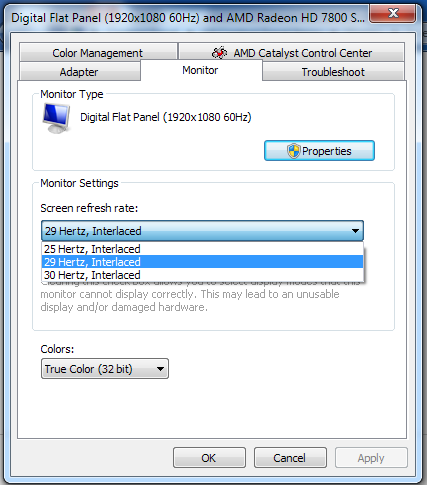

- Generic pnp monitor resolution windows 7 install#
- Generic pnp monitor resolution windows 7 drivers#
- Generic pnp monitor resolution windows 7 update#
- Generic pnp monitor resolution windows 7 driver#
I find your questioning of the validity of what the OP is trying to accomplish a diversion to the fundamental problem reported by the OP.

This is in fact the same issue that the OP is having. The issue is that when enumerating display monitors, and in turn calling getMonitorInfo, *sometimes* the szDevice returned matches the 'screen resolution' monitor numbers and sometimes it does not. is true, then could you please explain what the szDevice member of the MONITORINFOEX structure is useful for? I too am experiencing a significant issue with windows 7 that was not a problem in Vista or XP. "It was never a design goal to provide a way for applications to label monitors with the same IDs that the screen resolution control panel uses" With all due respect, I find the answers given to the OP by your team a cop-out and frankly nonsensical. Welcome to the All-In-One Code Framework! If you have any feedback, please tell us. If you have any feedback of our support, please contact remember to mark the replies as answers if they help and unmark them if they provide no help. Jialiang Ge MSDN Subscriber Support in Forum You can get your requested info based on these differences. Unlocks new features and configuration options in your devices, especially with video cards and gaming devices.BOOL CALLBACK MyInfoEnumProc( HMONITOR hMonitor, HDC hdcMonitor, LPRECT lprcMonitor, LPARAM dwData ) \0003' Monitor Name: 'Generic PnP Monitor' EnumDisplayMonitors DisplayDevice: \\.\DISPLAY1 DisplayDevice: \\.\DISPLAY2Īs you see from the above test results, StateFlags, DeviceID, and Monitor Name can differentiate the conditions.
Generic pnp monitor resolution windows 7 drivers#
If your desktop or laptop is running slow, or keeps crashing or hanging, there is a good chance that updating your drivers will fix the problem.Įnsures your hardware runs at peak performance.įixes bugs so your system will have fewer crashes. Many computer problems are caused by missing or outdated device drivers, especially in Windows 11.
Generic pnp monitor resolution windows 7 update#
Next, update individual drivers or all of the necessary drivers with one click.
Generic pnp monitor resolution windows 7 driver#
When the scan is complete, the driver update utility will display a results page showing which drivers are missing or out-of-date: Once you download and run the utility, it will scan for out-of-date or missing drivers: It will Update all of your drivers in just a few clicks, and even backup your drivers before making any changes. The Driver Update Utility automatically finds, downloads and installs the right driver for your hardware and operating system. Automatic updates could save you hours of time. If you are having trouble finding the right driver, stop searching and fix driver problems faster with the Automatic Driver Update Utility.
Generic pnp monitor resolution windows 7 install#
Visit our Driver Support Page for helpful step-by-step videos Install Drivers Automatically In most cases, you will need to reboot your computer in order for the driver update to take effect. Locate the device and model that is having the issue and double-click on it to open the Properties dialog box.Ĭlick the Update Driver button and follow the instructions. In Windows XP, click Start -> Control Panel -> Performance and Maintenance -> System -> Hardware tab -> Device Manager button In Windows Vista, click Start -> Control Panel -> System and Maintenance -> Device Manager In Windows 7, click Start -> Control Panel -> Hardware and Sound -> Device Manager In Windows 8, swipe up from the bottom, or right-click anywhere on the desktop and choose "All Apps" -> swipe or scroll right and choose "Control Panel" (under Windows System section) -> Hardware and Sound -> Device Manager In strong>Windows 11, Windows 10 & Windows 8.1, right-click the Start menu and select Device Manager It allows you to see all of the devices recognized by your system, and the drivers associated with them. To install a driver in Windows, you will need to use a built-in utility called Device Manager. Once you download your new driver, then you need to install it.


 0 kommentar(er)
0 kommentar(er)
